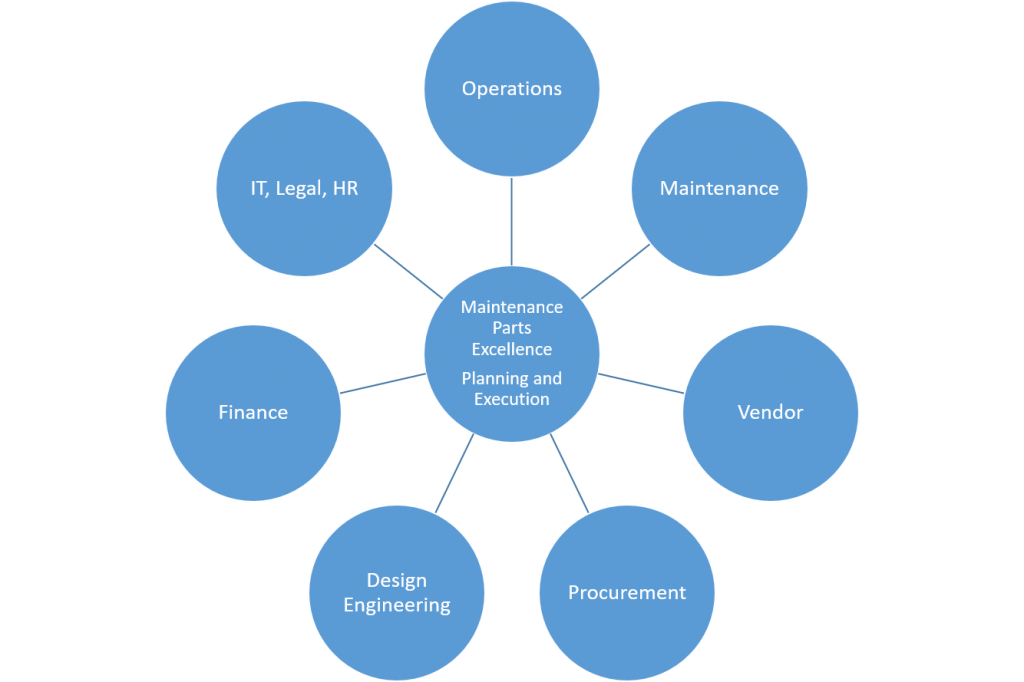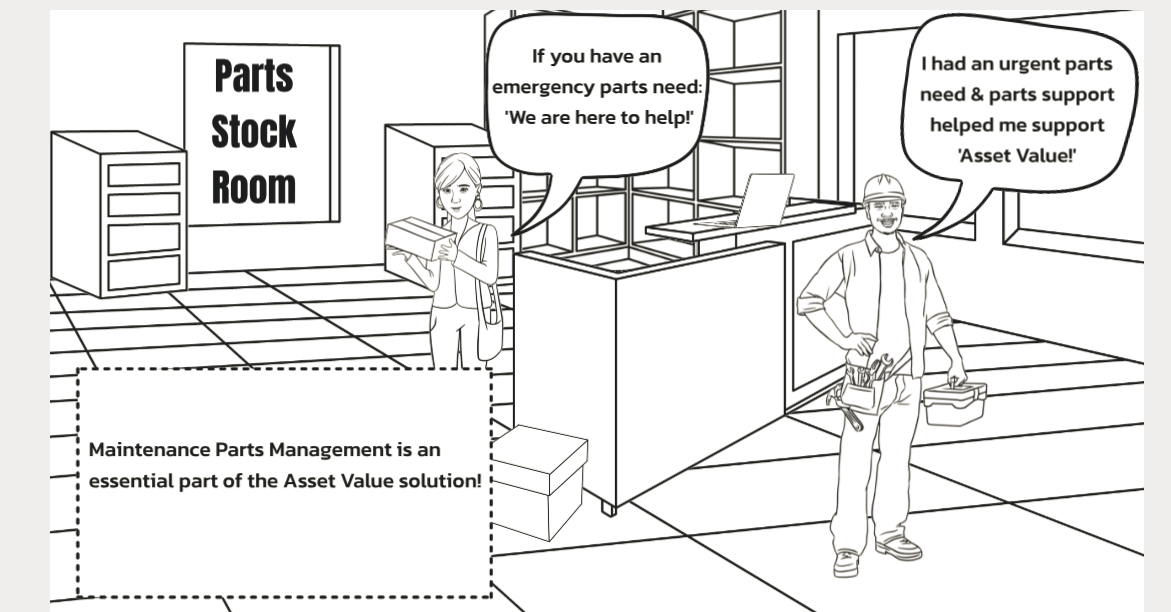Executing Asset Management Maintenance is fundamentally a parts and labour business. It is most often difficult to do maintenance of mechanical assets efficiently without the required parts close by.
Typically executing maintenance is 40% labour costs, 40% parts related costs (usage and management) and 20% other support costs such as infrastructure and technical overhead.
Most parts maintenance activities are disbursed or at least tracked through the enterprise local Stores location and supporting systems.
The best intentions of implementing ISO55000 standards or a Reliability Centered Maintenance (RCM) culture or a Total Productive Maintenance (TPM) culture will be undermined if the communication and support is not in place to provide the “right part, with the right quantity, to the right place, in the committed timeline” when really needed.
As well, someone, in the enterprise, needs to have the proper stewardship to ensure that the part is stored close to the asset’s forecasted need and managed such that it does not arrive broken or corroded (defective) when needed.
Most enterprising organizations exist to provide value either through the creation of manufactured products or through delivered services that in turn generate revenue and profit. The Maintenance organization plays a key role to ensure that the essential assets that contribute to their Operation, (i.e. manufacturing assets and/or service assets), create “value” in that organization’s supply chain and are maintained to deliver the targeted sustained value.

The Traditional Value of Asset Management
Maintenance Parts Excellence requires that the enterprise empower the supporting Maintenance Parts Organization with the paramount role of supporting the “value” mission of the enterprise which in turn, supports both Maintenance and Operations.
The Maintenance Parts organization mission should be to provide the required service levels of parts support (accuracy, proximity, timeliness, and availability) at optimal cost.
Cost management does play a role in Maintenance Parts Management. Cost is a necessary element of the real mission of an enterprise to create Supply Chain value. Value is created through an enterprise’ employees and the assets that are deployed to generate the revenue and profit expected by the business’s shareholders.
The cost of ‘not’doing Maintenance Parts Management well, can be debilitating to an enterprise. The obvious notion is that if the part is not available, then: the key asset (the needed value chain component) cannot produce value for the enterprise. In simple terms, a part is stocked to mitigate the unexpected lost function/production of the key asset. If a key asset is down and you are ‘waiting for a part’: the part related impact cost can be estimated by the lost production value until the part is in the hand of the Maintenance Technician.
As well, there are Maintenance Technician costs that are created by not having the part close when needed. If the Technician has to wait for the part, then the enterprise also experiences lost Technician time and this is also a cost to the business. If the Maintenance Technician needs to “put tools down” and leave the asset location until the part arrives and then “tool up” again: that compounds the Technician related maintenance costs. The lost production costs, technician costs, parts expediting costs all contribute to a part not being close and availableto mitigate theunexpected lost production of the asset.
When a proper enterprise-wide focus is well executed, the benefits can be very significant. Maintenance Technician time can be saved, Equipment purchases can be extended, warranties can be claimed, inventories (one time) and associated inventory carrying costs (annual) can be reduced. Expediting costs can be reduced (expediting management time and travel costs). As well the actual unit cost of the part can be reduced through an effective procurement program, consolidating vendors and parts repair programs (where appropriate).
It takes a community to create and maintain a successful Parts Support operation.
The goal for Maintenance Parts Management is to have the right parts close to the key assets, maintained in an environment that will secure and protect the parts until needed and accurately and responsively provide them to the Maintenance Technician when urgently needed. Achieving this goal at optimal cost will require an enterprise community to all be aligned – including Vendors, Design Engineering, Operations, Maintenance, Parts Planning and Warehousing, Procurement, IT, HR, Finance and Legal.
IT and data analytics particularly can play an important stakeholder support role in automating processes, replenishment and analytics in support of Maintenance Parts management. The basics in managing inventory policy is highly reliant on the opportunity to do effective statistical analysis.
The Maintenance Parts Excellence Stakeholders

Most successful organizations now recognize Maintenance Parts and Procurement as a critical success factor to Asset Management Excellence and their fundamental Supply Chain value proposition.
Where are you in supporting your Maintenance Parts Team?
References:
- Maintenance Parts Management Excellence Program, Lecture notes, UofT, 2018,– Don Barry, Asset Acumen Consulting
- Anatomy of Maintenance Parts Management Excellence, Book, 2019, Don Barry

